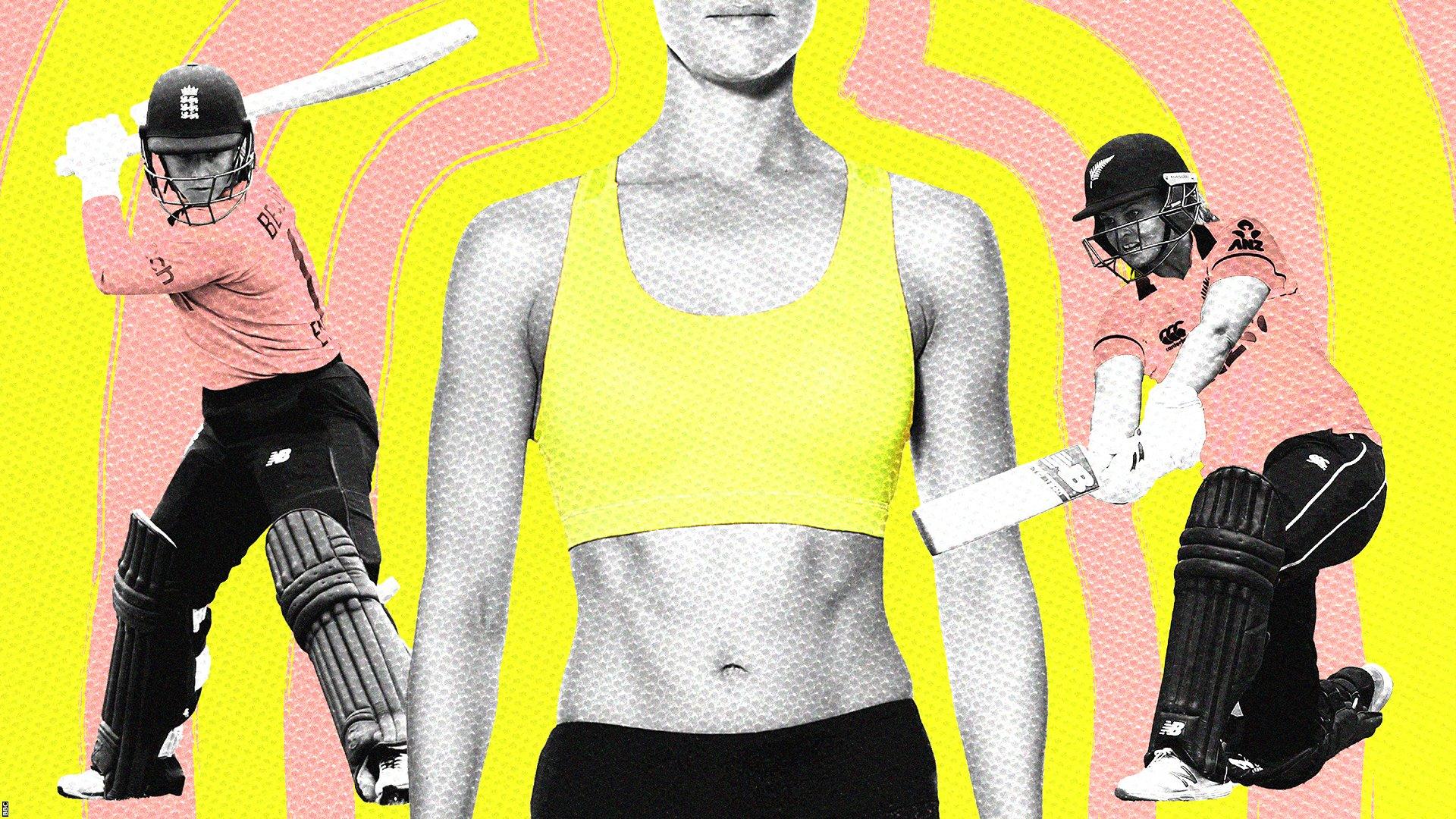Why a correctly fitted bra is essential for cricketers to achieve peak performance
- Published

Academics say the right sports bra can improve running performance by up to 7%
Helmet? Tick. Pads? Tick. Gloves? Tick. A properly fitted sports bra? Erm...
When England's Tammy Beaumont walks out to bat for her country, breast health is not typically at the forefront of her mind.
Until recently, she and many others hardly ever gave breast health and protection a moment's thought. That is despite, as Beaumont says, the fact her breasts may have "a function for future life" if she has children and wants to breastfeed.
"When your career is so short you only think about the here and now. You don't think about the future," Beaumont said.
Studies conducted by Breast Research Australia (BRA) at the inaugural FairBreak Invitational T20 tournament last year identified poor breast health literacy among female cricketers.
The research found a lack of knowledge relating to sports bras and fitting. To help remedy this, some teams - including English domestic side The Blaze - have hosted virtual workshops on the topic of breast health.
"It wasn't anything I had thought about before," said Beaumont. "I would choose a pretty sports bra or one that matches the kit but I never necessarily looked for something that would provide me with better support until the workshop.
"They were insistent you need a high-support sports bra. I think everyone watching was like, 'oh dear, I need to go buy a new sports bra because what I am wearing isn't good enough.'"
That was the first time 32-year-old Beaumont had considered breast health an important part of her professional life.
It was a similar case at FairBreak in Dubai last year. At the tournament, cricketers from 31 countries attended an educational workshop led by Wollongong University associate professor and BRA director Deirdre McGhee.
"We assessed 50 of them, and only four were in a bra that was supportive and correctly fitted," McGhee said.
Breasts are made up mostly from fat, glands and milk ducts. Skin keeps them in place, and a small structure of connective tissue helps to keep their shape. They typically weigh half a kilogram so if this weight and their motion is not supported it can cause pain and discomfort.
Recent research by the University of Portsmouth found that if breasts are not adequately supported during running, the G-force they undergo is equal to that experienced by an F1 driver.
The research group also found unsupported breasts can move up to 19cm during star jumps.
Academics at the University of Memphis said the right sports bra could improve running performance by up to 7%, while another study claimed a well-fitted sports bra could improve overall performance by 4%.
Last year, BRA identified extremely limited access to breast health education globally in women's sport - regardless of sport level and the country's socio-economic status.
"Playing without a well-fitted sports bra is like playing without spikes or gloves. Every female athlete deserves that access no matter their background," said Australian cricketer Georgia Redmayne, who attended and spoke at the FairBreak Invitational last year.
UK charity Women in Sport recently found just 36% of girls aged 11-18 wear a sports bra for physical education (PE) or sport at school, and 45% of girls admitted to not thinking about wearing a sports bra for PE, which was partly attributed to a lack of knowledge and education about their changing bodies.
The impact of a poorly fitting bra can also make exercise feel harder because upper-body muscles have to work harder to balance out the effects of moving breasts.
Musculoskeletal problems such as tightness, tension and pain may also arise in the back, shoulders and neck. Poor breast support also interferes with breathing - research found women held their breath for longer, meaning they fatigued faster in comparison to wearing a well-fitted bra.
It has also been said that if a woman were to run a marathon in an unsuitable bra, they would run an extra mile because research has shown that wearing a poorly fitted bra shortens your stride.
While this research on breast health and sport does exist, its findings are not yet adequately applied to women's sports teams.
Former New Zealand captain Suzie Bates - a veteran of almost 300 international matches - told FairBreak she had never been informed on the subject.
"The takeaway for me was how important protection of that area is for your health and the longevity in sport and if you can wear the right bra for a long period of time you will be in a much better place," Bates said.
Back in England, Beaumont has joined the ECB's women's health group as a player representative alongside team-mate Lauren Winfield-Hill. "It's disappointing when you end up down a rabbit hole of what research has been done on female athletes. You realise everything ever written on sport is mainly about men," Beaumont said. "People are trying to do that research now and play catch-up to make female athletes feel supported and get the most out of our physiology instead of working against it."

Bound by fate, a car accident and a dog! A warm-hearted Aussie rom-com about a flawed, funny couple getting it all utterly wrong
Who killed Michaela McAreavey on her honeymoon? The tragic murder of an Irish sporting icon's daughter reinvestigated
